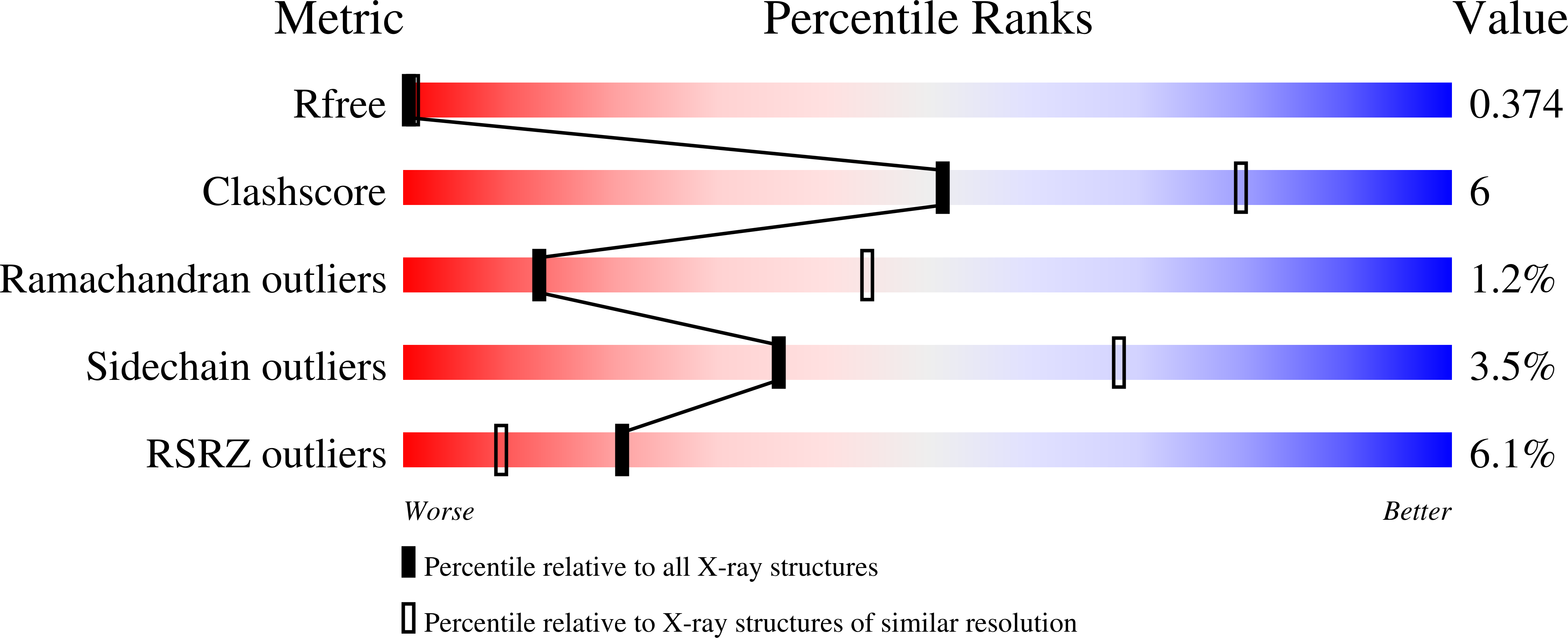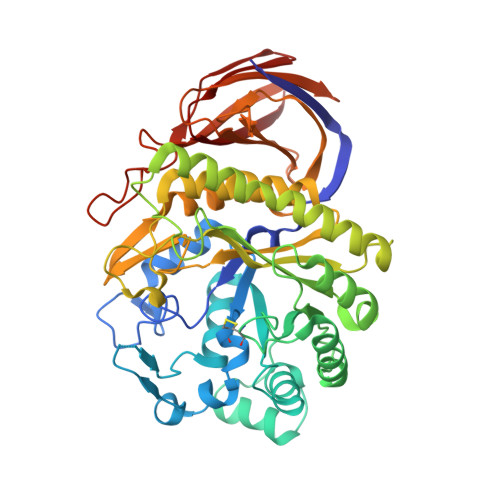Probing the determinants of the transglycosylation/hydrolysis partition in a retaining alpha-l-arabinofuranosidase.
Zhao, J., Tandrup, T., Bissaro, B., Barbe, S., Poulsen, J.N., Andre, I., Dumon, C., Lo Leggio, L., O'Donohue, M.J., Faure, R.(2021) N Biotechnol 62: 68-78
- PubMed: 33524585
- DOI: https://doi.org/10.1016/j.nbt.2021.01.008
- Primary Citation of Related Structures:
6ZT6, 6ZT7, 6ZT8, 6ZT9, 6ZTA - PubMed Abstract:
The use of retaining glycoside hydrolases as synthetic tools for glycochemistry is highly topical and the focus of considerable research. However, due to the incomplete identification of the molecular determinants of the transglycosylation/hydrolysis partition (t/h), rational engineering of retaining glycoside hydrolases to create transglycosylases remains challenging. Therefore, to understand better the factors that underpin transglycosylation in a GH51 retaining α-l-arabinofuranosidase from Thermobacillus xylanilyticus, the investigation of this enzyme's active site was pursued. Specifically, the properties of two mutants, F26L and L352M, located in the vicinity of the active site are described, using kinetic and 3D structural analyses and molecular dynamics simulations. The results reveal that the presence of L352M in the context of a triple mutant (also containing R69H and N216W) generates changes both in the donor and acceptor subsites, the latter being the result of a domino-like effect. Overall, the mutant R69H-N216W-L352M displays excellent transglycosylation activity (70 % yield, 78 % transfer rate and reduced secondary hydrolysis of the product). In the course of this study, the central role played by the conserved R69 residue was also reaffirmed. The mutation R69H affects both the catalytic nucleophile and the acid/base, including their flexibility, and has a determinant effect on the t/h partition. Finally, the results reveal that increased loop flexibility in the acceptor subsites creates new interactions with the acceptor, in particular with a hydrophobic binding platform composed of N216W, W248 and W302.
Organizational Affiliation:
TBI, Université de Toulouse, CNRS, INRAE, INSA, Toulouse, France.














